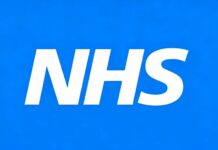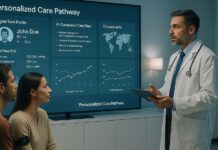In an era defined by digital innovation, the healthcare industry is experiencing a dramatic shift fueled by patient analytics. With the use of data-based insights in healthcare, providers are now capable of offering personalized, proactive, and effective care unprecedented in history. Patient analytics has become an essential component in the healthcare of today, giving providers the ability to employ data to improve decision making, improve operational efficiency, and improve patient outcomes.
The Role of Patient Analytics in Modern Healthcare
Patient analytics is the examination of healthcare data to generate useful insights that improve patient care and workflow. Health care providers are capable of using electronic health records (EHRs), wearable devices, and predictive analytics to move from reactive to proactive care. Particularly with the trends in health care delivery, shifting to proactive care is essential, since patient needs are increasingly heterogeneous and complex.
As patient data is stored digitally, further increasing individuals’ worries about the security of their health information, not to mention compliance with a slew of regulations around the world.
Data is the foundation of patient analytics in healthcare. From diagnosis to treatment and post-care, each step produces valuable data. The ability to analyze that data will allow providers to discover patterns, anticipate health risks, and streamline resources. Patient analytics is not merely a technological advancement; it is a cultural shift in health care with a focus on personalized clinical care and evidence-based practices.
- Enhancing Patient Outcomes
One of the most significant impacts of patient analytics is its ability to enhance patient outcomes. Through analyzing past and current data, healthcare providers are able to forecast future health issues prior to their occurrence. To illustrate, predictive models can determine the probability of developing chronic diseases like diabetes or cardiovascular disease, allowing early intervention and evidence-based preventive services.
Patient analytics in healthcare also enhances medication adherence, a key driver of successful treatment. By analyzing data, medical professionals can detect patients who are at risk of non-adherence and take steps to treat the root causes. Whether reminders, medication regimen changes, or patient education are provided, analytics-influenced strategies support improved health outcomes.
Personalization is another sector where patient analytics shines. Through knowing the individual patient profile, providers are able to craft personalized care plans with consideration of specific needs and preferences. This kind of personalization not just enhances clinical results but also enhances patient satisfaction and activation.
- Streamlining Operational Efficiency
Beyond improving clinical care, patient analytics is also critical to maximizing healthcare operations. In an industry where resources tend to be scarce, being able to reduce redundancy in processes is crucial. Analytics enables providers to predict demand for patients, schedule staff, and optimize resource deployment.
For instance, insights from data can minimize wait times by identifying peak hours in emergency rooms or clinics. This results in improved patient satisfaction and lightens the load on healthcare personnel. Likewise, analytics can streamline inventory control by forecasting demand for medical supplies, so that providers are well-stocked without overstocking or wastage.
In addition, patient analytics helps in managing finances. Through the detection of trends in billing and insurance claims, providers can reveal inefficiencies and put cost-control measures in place. This not only serves healthcare organizations, but it also makes healthcare affordable for patients.
- Supporting Population Health Management
At a macro level, patient analytics helps population health management by detecting trends and disparities in communities. Through the analysis of demographic, socioeconomic, and clinical information, providers can alleviate health inequities and create tailored interventions for vulnerable populations.
For example, insights from data can uncover more frequent occurrences of long-term diseases in some populations, triggering public health initiatives or resource deployment to combat them. Likewise, patient data analytics can aid in pandemic readiness through monitoring the dissemination of contagious disease and identifying outbreak hotspots.
Population health analytics also enables value-based care models in which providers are rewarded for placing more value on patient outcomes than on the volume of care they provide. Through tying financial incentives to health outcomes, the method encourages efficient and sustainable delivery of healthcare.
Overcoming Challenges in Patient Analytics
Whereas the potential of patient analytics to transform healthcare cannot be denied, putting such systems in place is never easy. Healthcare providers must overcome some important barriers in order to incorporate analytics into the patient care continuum effectively. These challenges can range from data privacy and interoperability to workforce readiness and ethics.
- Data Privacy and Security
One of the key challenges to patient analytics will be protecting sensitive patient information. Healthcare systems collect vast amounts of personal and medical information which, if hacked, could have dire consequences to patients and organizations. As data breaches and cyber attacks are becoming increasingly sophisticated, providing adequate security needs to be at the forefront of health care providers’ considerations.
Compliance to regulations such as GDPR (General Data Protection Regulation) in Europe or HIPAA (Health Insurance Portability and Accountability Act) in the U.S is the essential first step in protecting data. Compliance aside, healthcare providers must also deploy enhanced encryption, secure data protocols for transport, multi-factor authentication, and periodic vulnerability scans. Security training for employees is also essential to ensure all personnel understand the value of preserving data integrity and confidentiality.
- Interoperability
Yet another considerable barrier to the implementation of patient analytics is interoperability due to the variance of healthcare systems. Healthcare providers implement different technologies and processes that do not communicate with each other. This disruption prevents seamless data sharing between providers, laboratories, and public health systems, ultimately limiting the potential of analytics.
In order to tackle this challenge, efforts must be directed towards standardizing the formats of healthcare data and implementing universal data exchange protocols. IT developers, healthcare organizations, and policymakers must work together to develop systems that can safely and effectively share data. Interoperability not only will strengthen analytics but will also eliminate duplicated efforts, conserving time and resources.
- Ethical and Workforce Challenges
The ethical handling of patient information is an issue that medical professionals cannot ignore. Issues of consent, ownership of the data, and algorithmic bias need to be resolved in order to preserve trust between healthcare organizations and patients. Open policies and regular auditing of the analytical platforms are necessary to generate credibility.
Furthermore, workforce readiness constitutes another major barrier. While patient analytics still relies heavily on technology, it is reliant upon the workforce doing the work. Healthcare practitioners must educate staff on interpreting data, analytical thought, and decision-making. In the absence of proper expertise, even the most advanced analytics tools will fail to reach their full potential.
Leveraging Technology for Analytics Success
The intersection of healthcare and technology has hastened the take-up of patient analytics. The revolution is being led by artificial intelligence (AI) and machine learning (ML) to support predictive modeling and more complex analysis automation. These technologies help guarantee a more accurate insight while reducing the time, trouble, and labor to obtain them.
Wearable technology and the Internet of Things (IoT) are also helping in a great way to gather data. Whether it’s a physical activity tracker or a remote patient monitoring device, these advancements supply plenty of real-time data, which adds depth to patient analytics. For instance, a heart rate and physical activity tracking wearable device can yield useful insights into a patient’s cardiovascular health, allowing for timely interventions.
Cloud computing is a second patient analytics enabler, delivering scalable storage and processing of large amounts of data. With access to cloud-based health care, health care organizations can take advantage of state-of-the-art analytical platforms avoiding the large capital costs to acquire an on-premise platform.
Visual Representation: Patient Analytics in Action
To better understand the impact of patient analytics, consider the following table:
| Area | Application | Impact |
| Predictive Analytics | Identifying at-risk patients | Enables early intervention and prevention |
| Resource Optimization | Forecasting demand and managing staff schedules | Enhances operational efficiency |
| Population Health Management | Addressing community health disparities | Supports equitable healthcare delivery |
| Financial Analytics | Analyzing billing patterns | Reduces inefficiencies and costs |
The Future of Patient Analytics
As the needs of the patient continue to evolve, the need for analytics in patient care will evolve as well. The innovations driven by AI, IoT, and the sheer volume of big data will improve, add longevity to the information utilized to draw insight, and impact interventions. For example, integrating genomic information into the analytics equation potentially creates immense value to personalized medicine, where patients get treatment customized to their genetics.
Patient analytics in healthcare will empower patients. When they have access to their health information and analysis, patients can become active participants in the maintenance of their health and decision-making. This overall trend of patient-centered care aligns with a broader movement in health care to engage and empower people to help themselves live healthier lives. In the future of patient analytics, health care providers can share data while working together on a pooled approach to address health care needs, even at the country level.
Conclusion: A Transformative Shift in Patient Care
Patient Analytics is a paradigm shift in the health care field– the potential to improve patient outcomes, streamline operations, and enhance population health cannot be underestimated. Data-informed information will give health care providers the ability to manage the complexity of modern-day medicine with more confidence and accuracy.
The health sector is quickly transforming as technology and innovation are rapidly adopted, and the role of patient analytics will continue to build momentum that will present new opportunities for the delivery of safe, effective and equitable care. The message for health care organizations is clear: patient analytics is not a choice but is essential in the journey to excellence.














